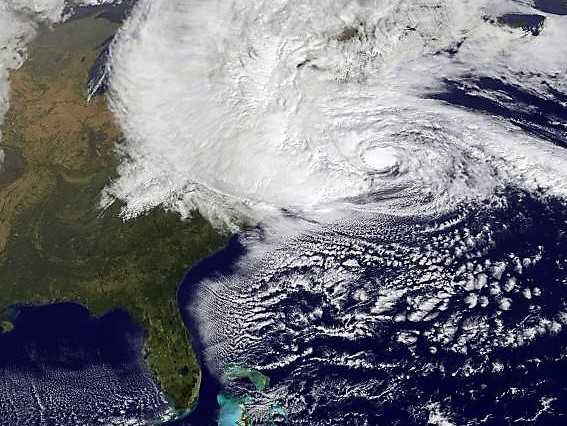Every morning, we run The Narrative Machine on the past 24 hours worth of financial media to find the most on-narrative (i.e. interconnected and central) stories in financial media. It’s not a list of best articles or articles we think are most interesting … often far from it.
But for whatever reason these are articles that are representative of some sort of chord that has been struck in Narrative-world.
Powell Suggests Fed Could Cut Rates If Trade Spat Escalates [Wall Street Journal]
Federal Reserve Chairman Jerome Powell said the central bank is closely monitoring the recent escalation in trade tensions and indicated it could respond by cutting rates if the economic outlook deteriorates.

The crazy thing about Superstorm Sandy was how big it was. It wasn’t the most powerful hurricane to hit the US, although it certainly packed a punch. But it was one of the largest storms on record in this country, with what’s called a “wind diameter” of more than 1,000 miles, and it set a record in much of the northeastern US for the lowest barometric pressure ever recorded.
How did Sandy get so big? After passing over Cuba and looking like it might dissipate into a few days worth of rainy weather, it merged with another low-pressure system and was re-energized.
We’re seeing the same thing in narrative-world.
The narratives of Central Bank Omnipotence and Trade & Tariffs have merged into a superstorm.

This is a narrative map of all unique financial media articles about the Fed in May, clustered by the sub-narrative of all the things that people talk about in regards to the Fed. That big blue circle is the effective center of gravity of this narrative map, and it’s comprised of three topics: Fed interest rate cuts (aqua), broad trade war coverage (red), and farmer-specific trade war coverage (dark blue).
There is no conversation about Fed rate cuts today without an enmeshed conversation about the China trade war. They have become a single memetic structure with an enormous gravitational pull.
What do we do in our ET Professional service? This.
We take five core macro narratives – Inflation, Central Bank Omnipotence, Trade & Tariffs, US Fiscal Policy, and Credit Cycle – and we evaluate their shifting structures. Not just their sentiment, but their STRUCTURE. Because when you see a structure like this, and you can track its movement across the map of narrative-world, you know it’s going to pack a punch.
To learn more about all of our subscription services, check here.
To learn more about ET Professional in particular, check here.
There’s nothing like this on the market today. And we’re just getting started.



Fury isn’t a useful reaction. At the same time, this process is indeed infuriating. Trump badgers Powell to lower rates “like one point” > Trump manufactures a trade war with tariffs that affect the economy > Powell lowers rates because we can’t have a market decline > Trump reduces tariffs > Trump claims to have fixed the economy just in time for the 2020 election. I allow myself plenty of room to be wrong, but it all feels to obvious. And yet…
This! It’s one thing to hear them always in the same breath, but seeing it form over the Atlantic of the Narrative Machine is so helpful. Thank you.